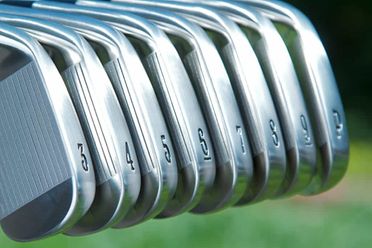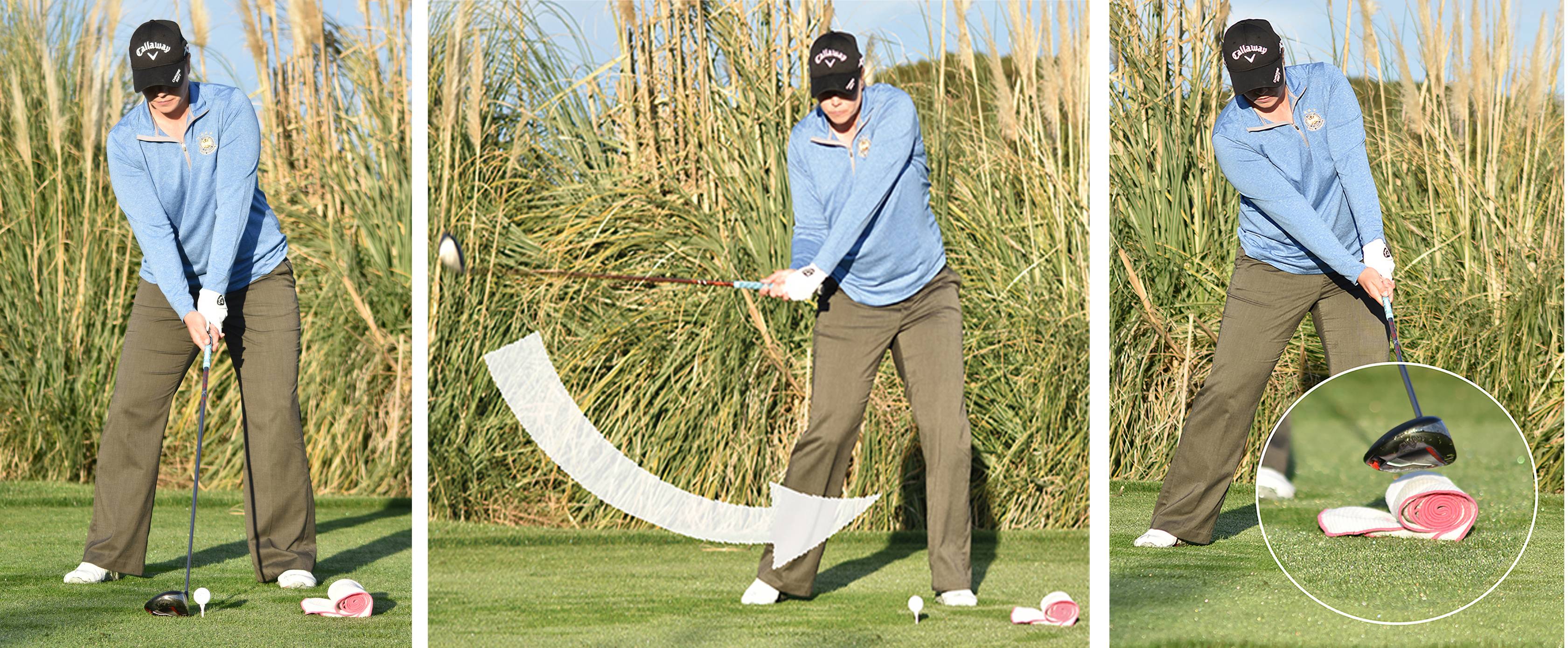
To hit the ball accurately in golf, you need to have the right grip. There are many grips that can be used to ensure you have the right connection between your hands and the ball. An example of an overlapping grip is one that places the lower pinkie on the index finger of your upper hand. An interlocking grasp means that both the upper and lower index fingers are overlapped.
Proper grip can be achieved by aligning your V's with your shoulders.
There are many different ways to hold the golf club. The neutral grip is the most popular way to hold the club. This grip allows you to keep your wrist hinge fluid and generate more club speed on the downswing. This also increases the chances of keeping the clubface square at impact, which will result in a more consistent golf shot.
It's based on finger linking
One of the most crucial parts of golf grip is finger linking. It promotes a stronger wrist hinge and more solid grip. The two most common methods are the Vardon grip and the overlapping grip. The Overlapping Grip has the thumb of the left handed aligned with the middle palm of the right.

It is based off a 10-finger grip
For those golfers who have smaller hands, a 10 finger grip is the most appropriate. This grip allows all ten of your fingers to touch the club head. It also ensures the most contact between your hand and the head. This grip reduces stress and increases power.
It's built on interlocking
A correct golf grip is essential for success in the game. Golf pros constantly check their grip, stance and set-up to make sure it is perfect. This is because the grip forms the only connection between the player and the club.
It's based on Vardon grip
The Vardon grip is the most common golf grip. It was named after Harry Vardon (great British golfer). The Vardon grip connects the right thumb and pinky to your left hand's middle finger. This grip gives you a high level control and stability. This grip allows you to strike the ball accurately and consistently.
It is based off the overlap grip
The overlap grip has become a very popular grip in golf. It was popularized by Harry Vardon, a legendary golfer in the late 1800s. It is also known by the Vardon grip and is used both by amateur golfers as well as pros. The overlap grip combines the hands into one unit, giving you more power and wrist freedom. The grip does not allow for control and is not appropriate for smaller hands.

It's based on the 10-finger grasp
The ten fingers grip is the most natural grip and easiest for most players. It provides the best leverage and speed for swinging. This grip is a great choice for beginners or those who feel the other grips don't have enough power to their game. This grip should not be used under extreme pressure as it can increase grip pressure and make it difficult to release the club from impact. The 10-finger grip is also the most comfortable and neutral grip. It is easier to control because the wrists don't flex excessively and it doesn't cause pressure.
FAQ
How can I improve the game of golf?
There are many options to improve your golf game. A club could be a good option. You can meet other golfers and learn new techniques by joining a club.
You might also consider buying equipment, such as golf clubs or balls. These items will assist you in improving your game.
You can also study books about golf. You can also read books about golf to gain a better understanding of the rules and regulations.
How does golf work?
Golf is played 18 holes on a course. The Rules of Golf govern the game.
The first stroke is taken from behind a designated teeing area. Players play turns hitting balls into holes at different distances on the course. Each hole is different depending on the distance to the teeing areas.
There are three types of shots that can be used in the game:
-
Players use clubs to hit the ball as far and high as they can in a drive shot. This shot is considered to be the most important.
-
An approach shot is when players aim to hit the ball within a specified range of the hole.
-
A putt, where players attempt to sink the ball into the cup by rolling it along the ground.
Every hole must be completed by a player sinking all of his/her own puts. Each unmade putt is a stroke loss.
It is possible for players to choose to play alongside a caddy or partner. This person will be responsible for carrying their club throughout a round. The caddie usually has no role in determining the outcome of the match but can assist the player with advice about strategy and etiquette.
What is the difference of a driving range versus a putting course?
Players can practice hitting the ball from 50 to 300 yards on a driving range. For putting practice, players can use putting greens.
What is a bogey?
A bogey is an imaginary number used as a target for golfers. It is not part the game; it is a way to keep score. The player who shoots closest to the number wins the hole.
Jock Hutchison (the first professional golfer from Scotland) invented the idea of a Bogey. The idea was formed while he was playing at home.
He wanted to keep track his progress so he wrote down a number and stuck it to the wall over his bed. This became known as "Hutchy Bogey."
Statistics
- In the United States, the number of people who play golf twenty-five times or more per year decreased from 6.9 million in 2000 to 4.6 million in 2005, according to the [51] (en.wikipedia.org)
- They do this by means of assessing and rating courses according to the average good score of a "bogey golfer," a player with a handicap of around 20. (en.wikipedia.org)
- Buying a set of Titleist or Taylor-Made irons for nearly $1,000 is simply not necessary and likely a waste of money. (golficity.com)
- Professional golfers typically make between 60% and 70% of greens in regulation. (en.wikipedia.org)
External Links
How To
How can you play more golf when the wind is blowing?
Golf is a game played outdoors in open spaces on well-kept grassy areas. It is one of the most popular sports around the globe. There are many types of golf courses across the world, ranging from public parks to private clubs. Indoor golf can also be played, such as in shopping malls or indoor arenas. The game consists of a series of holes, where players must hit balls into them. Each hole contains a fairway or rough, a teebox, fairway, rough, hazards, and a green. Depending on the type shot needed, players may use a driver (wedge, wedge, long-iron, or putter). Players may be required to carry the ball a certain distance before they can hit it. Or, they may just have to drop it in the cup. When playing outdoor golf, various conditions affect how the player hits his/her shots. These conditions include the speed of wind, temperature, humidity, as well as visibility.
There are two main types, crosswinds & headwinds. Headwinds blow from the right to the left and crosswinds are from the left. If the wind is blowing towards the golfer, then he/she is hitting against the wind; if it is blowing away from him/her, then he/she will be hitting with the wind. Golf in strong winds is harder as the ball tends not to travel as far and higher. It becomes difficult for the player control the trajectory and the direction of the ball. To compensate for these effects, players try to keep the club face perpendicular to the ground. They strike it in a way that makes it contact the ball fully and maximizes its power. Although the ball may fly slower in stronger wind, it can travel farther because of increased air resistance.
Playing in the wind can be difficult. As mentioned above, the wind affects the flight path of the ball. Good golfers should know the current wind conditions in their area. He/She will adjust their swing to match the wind conditions so they can hit the ball straight and without losing energy. Another important aspect to consider is where the wind is coming from. The wind does not travel uniformly in all directions. For example, the breeze that blows off the ocean can be very light, but it can often be stronger near the shoreline. Similar to previous examples, wind blows at a higher speed close to ground. The golfer must therefore pay attention to the wind direction as well as intensity.
Golfing in the wind can be challenging. You need to watch the wind and make sure that your swing is aligned properly. You must also learn to read wind patterns and adjust your swing accordingly.